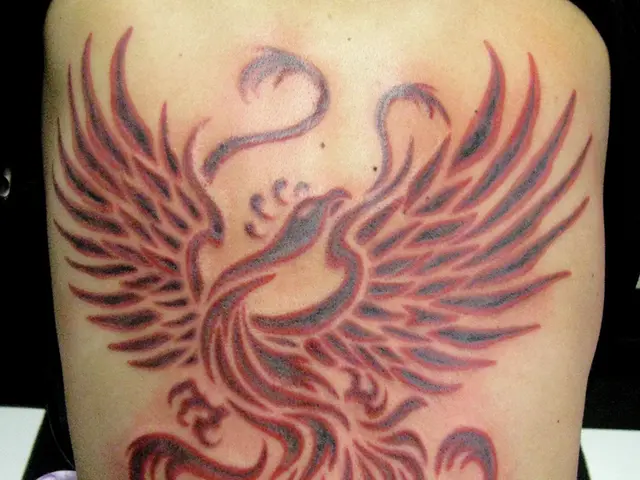Timeline for Wearing Makeup Following Botox Treatment: Crucial Guidelines
After undergoing a Botox treatment, clients leave the clinic with smoother skin yet puzzled about when they can return to wearing makeup. The key is to wait and approach the resumption of makeup routines with care.
Botox injections work by relaxing the tiny muscles that form expression lines. After the procedure, micro-wounds are formed where the Botox droplets travel through a fine needle. Proper aftercare is crucial, as pressure, harsh cleaners, or improper makeup application can shift the toxin and shorten its lifespan.
Early makeup application following the treatment can introduce complications. Clinicians advise against applying makeup immediately to avoid surface infections, displacement of the toxin, and extended bruising. The temptation to cover up right away may be strong, but it is essential to let the neuromodulator settle before applying makeup.
The neuromodulator requires a still environment to anchor, a stage practitioners call the settling phase. Most patients find that this brief waiting period of a few hours is worth the payoff for extended smoothness and symmetrical lift. During this time, strive to stay upright, skip strenuous exercise, and avoid applying makeup.
So, how long after Botox can you safely apply makeup without risk? Waiting for four hours is generally recommended, and waiting a full day is even better. Once the allotted time has passed, gently apply makeup, starting with a thin layer of mineral SPF or a sheer tinted moisturizer, patted on with clean fingertips.
Navigating makeup after Botox requires adhering to three principles: sanitation, softness, and patience. In the first two days, apply makeup with freshly cleaned fingertips and opt for hypoallergenic makeup formulated without oil. choose lighter coverage foundations or a whisper of cream blush, and avoid vigorous rubbing.
For the first 48 hours following the Botox appointment, the skin behaves like a sponge, readily absorbing anything placed on it. Thick, occlusive heavy creams can seal in sweat and sebum, potentially extending bruising. Additionally, avoid using acne fighters such as benzoyl peroxide and salicylic acid on treated areas during the first two days, as they increase irritation risk.
Heat is another silent saboteur of fresh injections. Prolonged exposure to sunlight or indoor tanning beds raises skin temperature, dilates vessels, and can prevent Botox from staying where the injector placed it. In the days following the treatment, it is essential to avoid direct sunlight and tanning beds to ensure the best results.
In consultation with your injector, keep a journal of each Botox appointment, noting the length of time between treatment and makeup application, redness, and whether foundation slipped. This information helps your practitioner adjust your next Botox treatment and maintain optimal results.
Overall, the only way to combine flawless color with flawless muscle control is to respect the clock. Wait, cleanse tools, and think tactically about each step in your beauty routine. By following this advice, you can reap the benefits of your Botox treatment without compromising skin health and enjoying a smooth, symmetrical look.
Sources:[1] https://www.aestheticsjournals.com/article/S2050-6805(19)30381-2/fulltext[2] https://www.ncbi.nlm.nih.gov/pmc/articles/PMC3236625/[4] https://www.ncbi.nlm.nih.gov/pmc/articles/PMC6162674/
In the healing phase after a Botox treatment, it's advisable to avoid applying makeup for at least four hours and preferably a full day to prevent surface infections, toxin displacement, and extended bruising. During this period, stick to sanitized tools, hypoallergenic makeup, lighter coverage foundation, and clean fingertips to ensure skin health and optimal results in skin-care and health-and-wellness, contributing to the overall healing process and the longevity of the skin-care treatment.








